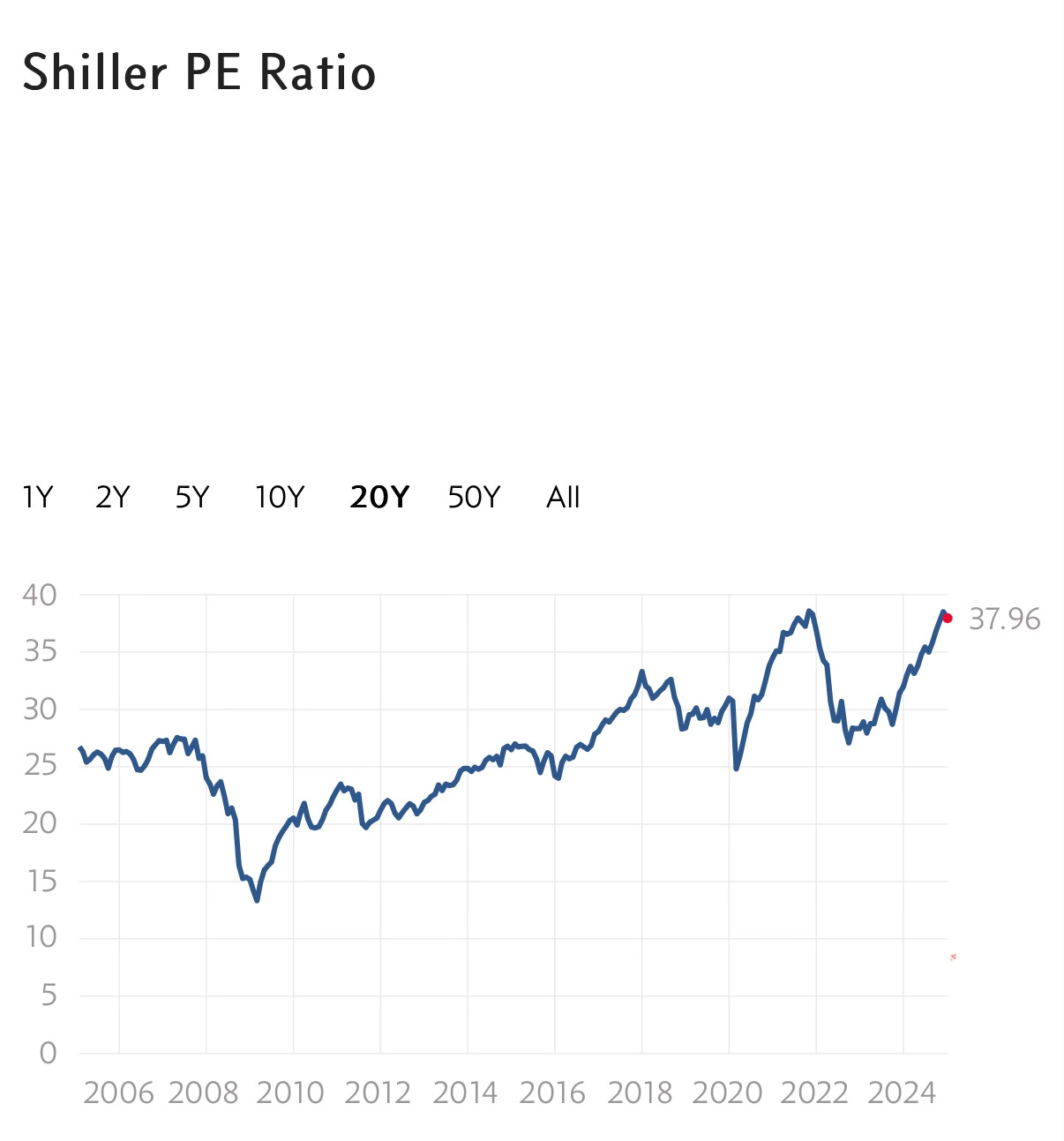2025: The Year of the Bear?
As we turn the page to 2025, investors, and businesses are grappling with a pressing question: Is this the year the bear finally awakens? While markets have defied gravity for much of the past two years, the economic and financial landscape suggests a reckoning may be on the horizon. Here’s a comprehensive look at the forces shaping what may be a pivotal year for the US economy.
Stock Market Valuations: A Bubble Ready to Burst?
Entering 2025, the stock market is sitting atop record-high valuations. The Shiller PE ratio stands at a staggering 38, and the S&P 500’s standard price-to-earnings (P/E) ratio is at 30—double the historical median of 15.
At these levels, history shows that future returns are often negative, as overvaluation sets the stage for correction.
High valuations are compounded by interest rates hovering around 5%, making bonds a more attractive investment than equities for many investors. Why take on the risk of stocks when a ROI of 5% is available? This dynamic has already begun to shift capital flows away from equities, particularly as corporate earnings growth struggles to keep pace with soaring stock prices. High valuations might still be tolerable if earnings growth could justify the prices, but the numbers tell a different story. Stock prices have surged far faster than corporate earnings, leaving many companies with the daunting task of delivering growth that may be unattainable. For example:
• Tesla would need to grow its earnings by 30–50% in 2025 just to maintain its valuation.
• Apple faces challenges from declining demand in China and lukewarm reception of new products like the Vision Pro headset.
• Nvidia faces significant challenges in sustaining its massive growth as it transitions from leveraging strategies like boosting accounts receivables, as it did in 2024, to focusing on tangible sales and delivery of its chips. To maintain its position as the world’s most valuable company, Nvidia must not only meet its existing commitments but also drive incremental sales in an increasingly competitive market.
At the same time, interest rates near 5% offer investors a safer alternative in bonds. Why take on the uncertainty of equities when a guaranteed return is readily available? This competition for capital could exacerbate the pressure on stock prices.
Consumer Demand and Economic Indicators: Cracks Emerging
Recent data points suggest that consumer demand is starting to weaken. Durable goods orders—a key indicator of economic health—posted a decline in late 2024, signaling reduced business investment and consumer spending on big-ticket items like appliances and cars.
Keep reading with a 7-day free trial
Subscribe to The Coastal Journal to keep reading this post and get 7 days of free access to the full post archives.






